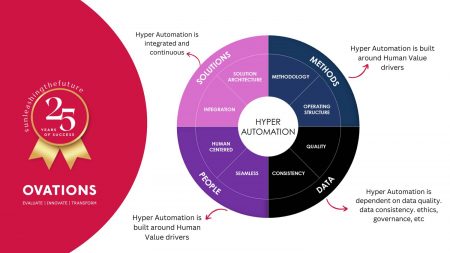
The days in which companies dictated what customers should want and what should be sold to them are over. The rise of social media platforms such as Facebook and Twitter gave consumers a platform on which to engage with each other about their experiences with different brands, levelling the playing field as consumers are now able openly to share their experiences, both good and bad, for the rest of the world to see.
And it’s not only customers that are changing; today’s retail environment has evolved, too, due to market disruption from online competition, shrinking margins and increased price transparency. Yesterday’s approach to retailing is not as effective, so brands are limited in the ways in which they can differentiate themselves. However, most are finding that personalised approaches and unique experiences that are tailored to each customer are the most effective.
In the not-too-distant past, personalisation was limited to targeted offers, but it now extends to the full customer experience. This shines the spotlight on how today’s customers want personalisation along the full chain of their interactions with a business, through a slew of personalised touchpoints that allow them to choose the products and solutions that best meet their needs. Savvy retailers have honed personalisation to a fine art, not simply sending them offers targeted at individuals who are like them, but ones that are truly tailored to the individual themselves.
The idea of customer experience is transforming rapidly, too. New developments in technology mean that each consumer can be tracked and analysed to understand their buying patterns and preferences, and ultimately acted upon. Organisations need to ensure they are leveraging the most effective ways to deliver an enhanced customer experience from beginning to end, while still making a profit, building brand loyalty, and building lasting relationships with their customers.
However, this becomes trickier in an era where customers are spoiled for choice, with each business claiming their product or service is superior, or their price point more compelling. Customers have woken up to the fact that they have a voice and that they are in the driving seat. They care about who they buy from, who they work for, what the organisation is about and what it stands for, and whether they share similar causes and values.
Today, it’s all about value-adds. Simply providing a good product or service and doing it well is not enough. Customers want to see what else can be provided, and how that brand can move from being yet another service provider to a trusted partner with a common interest and concern for realising their goals.
This has fuelled the need for organisations in every sector to place more focus on:
- How the role and each moving part of the organisation is key to the success or failure of their business, and to offering premium service to customers.
- How technology and the business need to work together to help realise organisational goals.
- Finding new ways to deliver hyper-personalised experiences to customers, by interacting with them across the channel of their choice, and offering them customised pricing and solutions.
- Treating data and analytics as an integral part of the strategy to improve customer experience journeys.
- How they could begin to dabble in new territories and provide services or products for which they were previously not known.
- The power of digital marketing, social media, influencers and new target audiences that connect customers to the world, and to each other.
All of this speaks volumes about how customer expectations have shifted. We no longer measure against the old benchmarks of customer standards, expectations, demands, buying habits, and wants and needs. The “nice-to-haves” of yesterday have become the expected minimum today. Customers want partners who redefine the “must-haves” and provide them in the most convenient ways.
This is forcing entities to accelerate their digital journeys, as they understand that staying relevant in their particular markets and keeping their customers happy is what makes the difference between a thriving business and closing their doors permanently. Consumers have changed, they expect more, and they demand more value-added services, as well as convenience and quality, and they want a trusted partner who truly understands their needs.
For business
What does this mean for businesses? They all need to up their game. In a world where customers are spoilt for choice, they will always return to the basics of how they were treated and how they found the overall experience. The only constant is that technology, and the way businesses engage with customers, will continue to evolve, and simplicity will become key to good customer relationships. Customers need to see the value instantly and with minimal effort.
Organisations that are aware of how customer demands are constantly shifting, as well as the role that digital is playing in every customer experience journey, will make the new dynamic work. They will evolve from viewing it as a strategic objective to a way of working and will thrive, and have a clear advantage over their competitors, as they will never become complacent, but strive to improve and adapt alongside their customers.
- The author, Roanne Puckree, is executive lead: client relationship management at Ovations Group
- This promoted content was paid for by the party concerned




